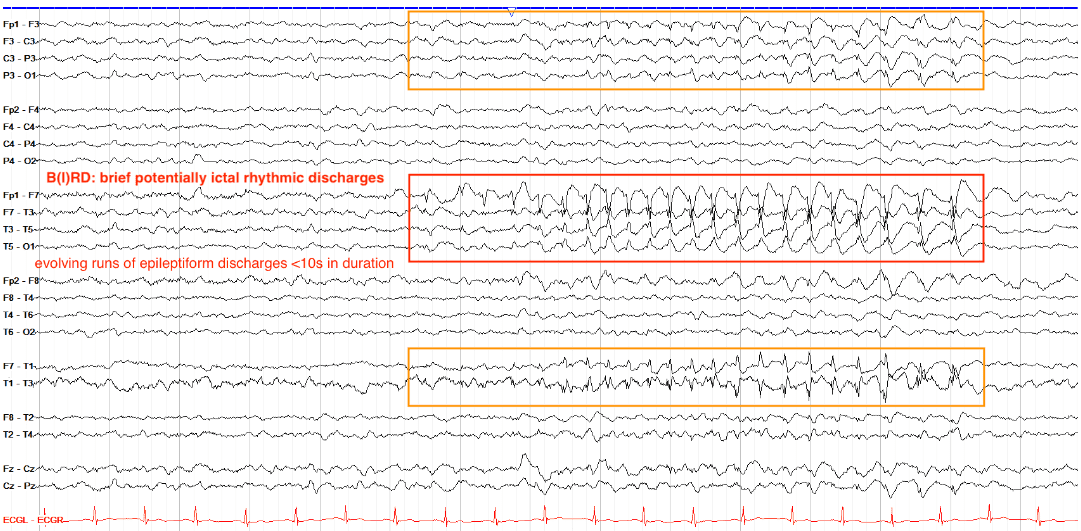References:
EEG Sample: Learning EEG shared w/ permissions
Yamada, Thoru, and Elizabeth Meng. Practical Guide for Clinical Neurophysiologic Testing: EEG. Available from: Wolters Kluwer, (2ndEdition). Wolters Kluwer Health, 2017.
Greenfield, John, L. et al. Reading EEGs: A Practical Approach. Available from: Wolters Kluwer, (2nd Edition). Wolters Kluwer Health, 2020.
B(I)RD (brief ictal or interictal rhythmic discharges), BERD (brief electrographic rhythmic discharges), or BRD (brief rhythmic discharges according to ACNS guideline) B(I)RDs are defined as brief focal (including L, BI, UI or Mf) or generalized rhythmic or repetitive activity >4 Hz (at least 6 waves at a regular rate) lasting ≥0.5s to <10s, not consistent with a known normal pattern or benign variant, not part of burst-suppression or burst-attenuation, without definite clinical correlate, without progressive change, resembling ictal events and usually recur frequently during EEG monitoring.
Criteria for B(I)RDs includes at least one of the following features:
- a. Evolution (“evolving B(I)RDs”, a form of definite B(I)RDs)
- b. Similar morphology and location as interictal epileptiform discharges or seizures in the same patient (definite B(I)RDs)
- c. Sharply contoured but without (a) or (b) (possible B(I)RDs)
B(I)RDs were initially described in neonates and reported to be associated with HIE and poor neurodevelopmental outcomes. Electrographic seizures in neonates are typically required to last at least 10 seconds, and paroxysmal discharges shorter than 10 seconds are termed “BIRDS”.
Later, the same concept was applied to adult EEGs with rhythmic discharges. The pattern is usually found in critically ill patients (especially those with newfound tumors and strokes), neonates, and sometimes those with NMDA receptor encephalitis.
Question:
Approximately what percentage of adult patients with BIRDs subsequently develop NCSE?
Results
#1. Approximately what percentage of adult patients with BIRDs subsequently develop NCSE?
While B(I)RDs are not technically seizures, they are associated with a similar outcome and require treatment. More than 90% of adult patients who had B(I)RDs subsequently developed NCSE and more than half of them also showed PLEDs or LPD independently. It is reasonable to switch to a cEEG once B(I)RDs are confirmed on initial routine EEG and the patient should be treated for seizures.





